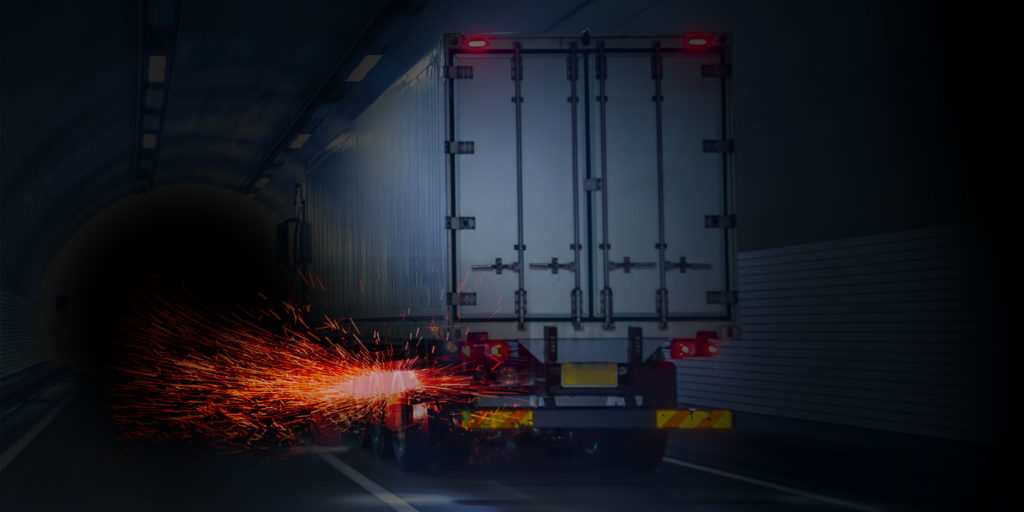Smoking is expensive!
Now, before anyone thinks I am going off on a tangent lamenting the cost of a pack of smokes, rest assured that is not on the agenda. The smoking under consideration here produces the unmistakable aroma often noticeable at intersections or from the underside of a trailer just before a shower of sparks bursts forth and illuminates the pre-dawn freeway like a meteor come to earth.
Yep, that smell of burning rubber is nothing less than the rapid release of money into the atmosphere.
Without question, tire failure is expensive in terms of equipment costs and downtime. Adding to that cost is the always-present potential for injury and property damage whenever a tire suddenly turns into a flaying mass of rubber and steel. It quickly becomes clear that keeping tires in proper working order is essential for productivity and safety.
Granted, road hazards will always be a major contributor to tire failure. For those instances when a tire does not blow out or quickly run flat, it is wise to inspect the tires and wheels for any damage. Potholes, particularly those resembling a crater on the moon, can also damage a tire and wheel. And as it slams into the opposing side of the cavern, said tire contributes to making the crater even deeper.
Then there are curbs. Tears to the sidewall or internal tire damage can result from a curb or any object large enough to damage the tire.
Okay, so while road hazards may not be avoidable and are well beyond the control of the technician in the shop, tire maintenance is a step technicians may take to keep tires in good order.
What are some of the issues that may contribute to tire failure?
Improper inflation pressure. Under-inflated tires can overheat and lead to failure. Dual tires, with mismatched pressures place a greater load on the higher inflated tire.
Mismatched tires on duals likewise create an additional load on a single tire. Make sure to adhere to tire matching specifications.
Ensure that the wheels and tires are within the application specification for the load being placed on them.
Water or other foreign bodies left inside a tire when mounting creates an imbalance that may result in undesired tire wear. Tires left outside may collect rain or other interesting objects not intended to be inside a mounted tire. Also, when mounting tires, take care not to allow excessive mounting lubrication to remain inside the tire before inflating. Avoid making the inside of the tire its own atmospheric climate as water endlessly condenses and evaporates inside.
Oil can damage tires. Don’t allow oil leaks to endlessly come into contact with the tires. Clean any oil off the tires.
Vibrations are also a source for abnormal tire wear and premature failure. Investigate and repair vibrations, whether the vibration is coming from the tire itself or from some other area which may affect the tire, such as alignment or worn suspension components.
Always refer to your repair information resource, like TruckSeries from Mitchell 1, for the correct specifications and procedures to help keep the vehicle’s tires rolling safely down the road.
While there is no way to ensure that tire failure will never happen, thorough scheduled maintenance to keep the tires in specification for designed operation will certainly help.
Read more about the importance of proper tire inflation in our story here.














